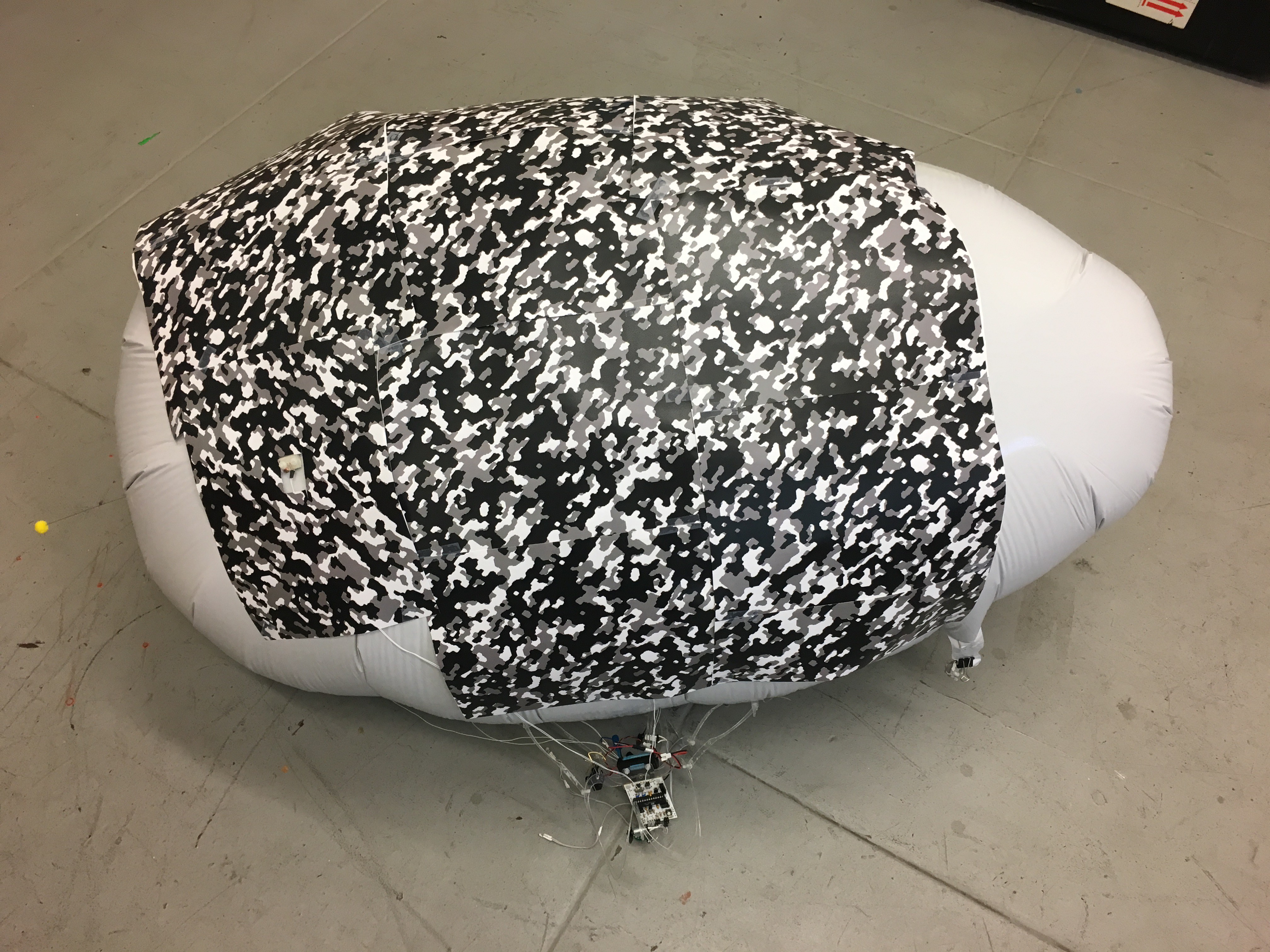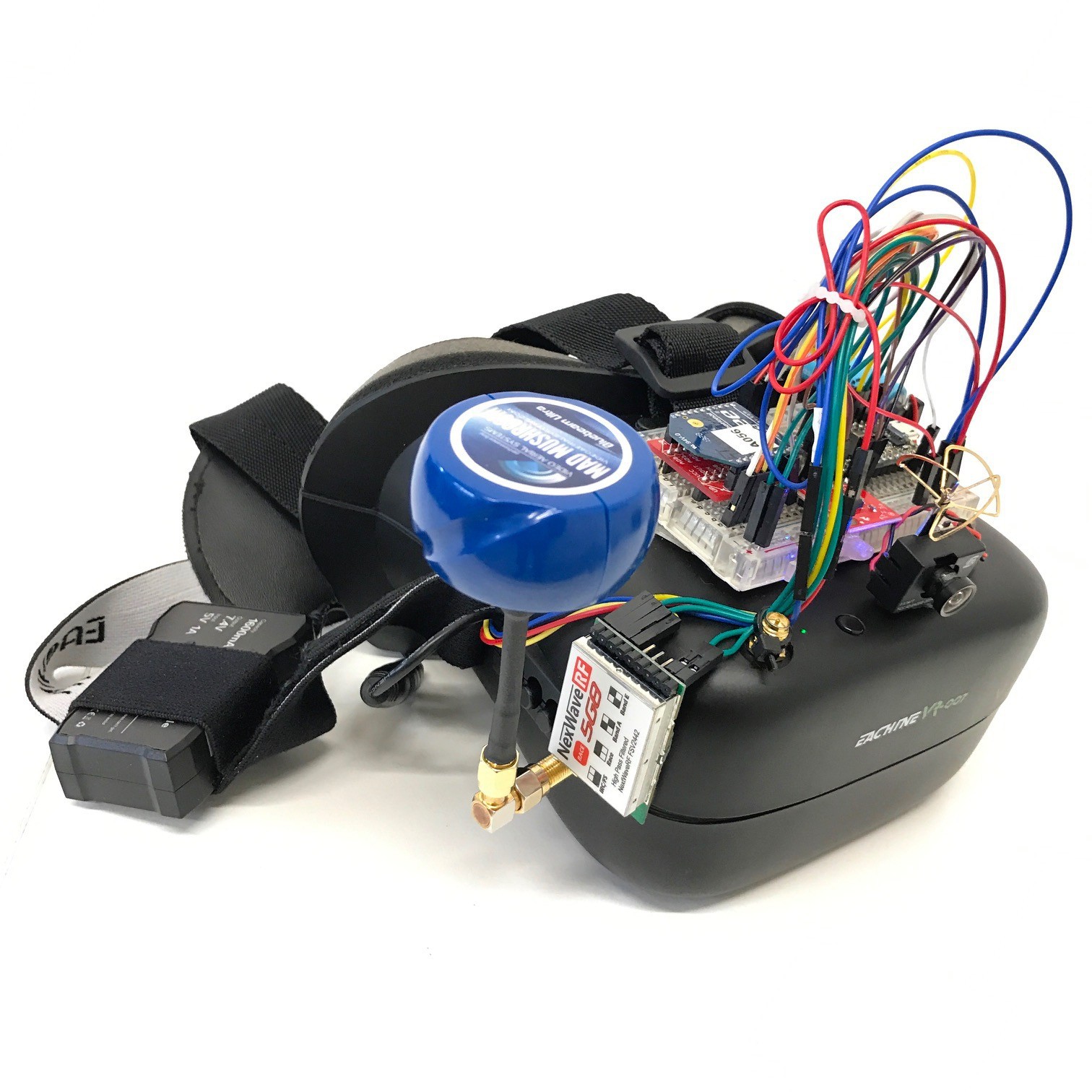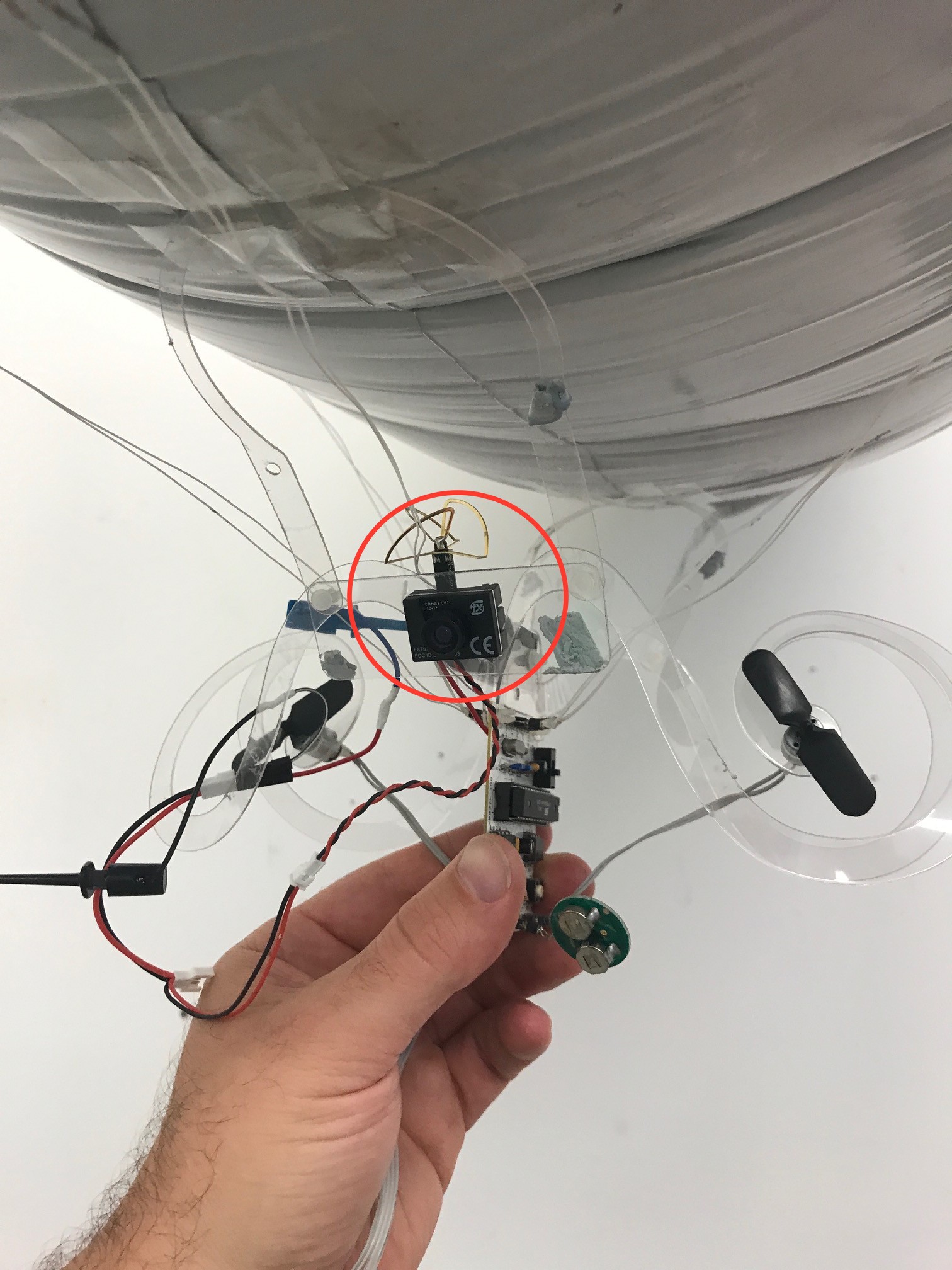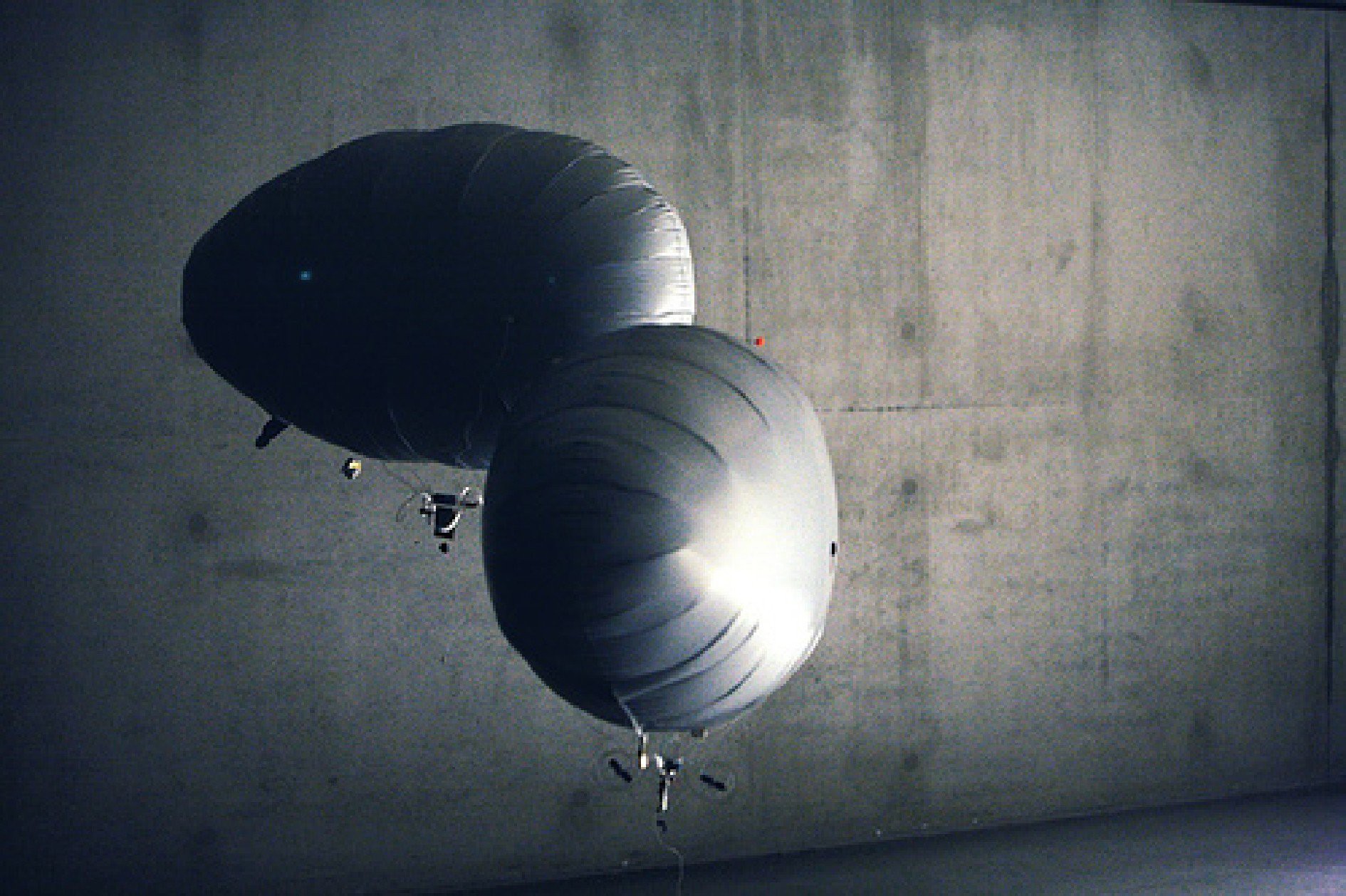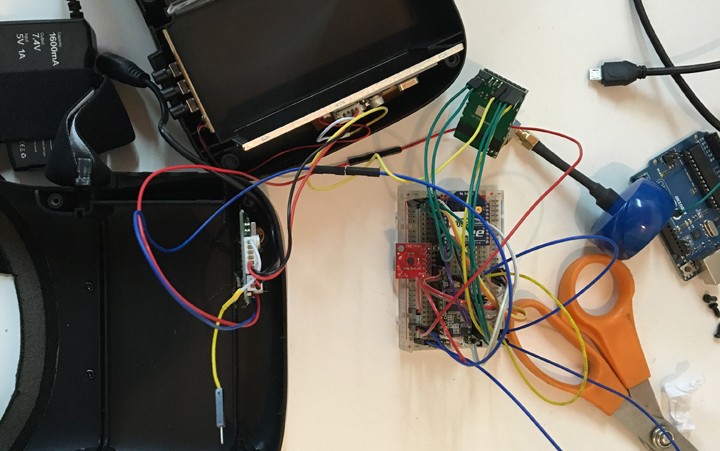-
Augmented Reality
07/21/2017 at 00:00 • 0 commentsLooking at the world through a video camera has one advantage: augmented reality. We attempted to mark and scan a blimp in order to turn it into an AR target. We had to route our video feed through a Unity application, and things worked reasonably well, but you have to be really close to the blimp in order for the target to function. This is still a work in progress, as we continue to think of how AR might benefit the experience. And yes, that is a giant Vuforia target marker on the ground. We had to print it in 40 tiles and stitch it together on the ground. Works quite well.
We also tried slapping some paper targets on to the blimp to improve accuracy. Unfortunately, the paper weighed too much and the blimp couldn't fly. Poor little guy...
![]()
-
Working Demo
07/20/2017 at 23:27 • 0 commentsJed demos the experience, shows what it's like to have another head
And this is what it looks like from inside the headset.
-
Headset rigged up
07/20/2017 at 22:06 • 0 commentsOur latest headset rigged up and wearable.
-
Blubber Bots!
07/20/2017 at 22:05 • 0 commentsIf we attached the remote camera to a flying blimp, perhaps we could see a space from a different and unexpected perspective. We leveraged Jed's Blubber Bots to provide a nice, stable, platform.
Blubber Bots are floating DIY robotic species that navigate autonomously and intelligently. Blubber Bots float, dance, seek and sing. They are light-seeking hellium-filled balloons that graze the landscape in search of light and cellphone signals. Designed into the inflatable form is a set of light sensors enabling them to seek out the brightest light source.
They are also equipped with a phone flasher and can recognize cellphone activity. You can interact with a Blubber Bot by making a call and waving your phone near it. In response, it will go into a flocking dance or sing you a special tune.
Social and friendly in nature, Blubber Bots like to play. You can invite other Blubber Bots over for a party to watch a roomful flock and mingle. They propel themselves using helium buoyancy and two directional motors. They are a little clumsy though and bump into things. Fortunately, Blubber Bots are born with a feeler (bump switch) to help them out of tricky situations. At a flick of a “feeler”, they back up and head in a new direction.
Not only do they like to play, but they love to sing. Blubber Bots have a unique voice generated from a vibrating motor and a small piezo speaker attached to its mylar body. They bellow sounds similar to a whale’s song and serenade you with melodies. When not being played with, they rest while tooting periodic sounds in their sleep, dreaming until they once again are awakened.
![]()
![]()
-
Headset in use
07/20/2017 at 22:01 • 0 commentsAfter writing a bit of firmware, we have the whole thing up and running. The motion sensing is tuned for wearing the headset, holding the unit like this causes extra motion, so there are a few false positives in there, but you get the idea...
-
Headset hacking
07/20/2017 at 21:56 • 0 commentsPulling apart a video headset and accessing the pins on the video receiver. The HMD is augmented with an micro controller and an accelerometer to sense head motion. We used the previous video receiver hack to connect a Teensy to the receiver. We had some issues with power connections because the screen needs a much higher voltage than the rest of the system, so we ended up using the headset power supply and voltage converting ICs.
![]()
-
Arduino controlled video receiver
07/20/2017 at 21:52 • 0 commentsThe first attempt to hack a video receiver with an Arduino. We removed the momentary switch on the receiver and routed the connection through a digital IO on the arduino. The sketch increments through the channels every couple seconds. The next goal would be to add the accelerometer and switch channels on motion or stillness, but for now, we know we can control channel selection through code.
FEED
An immersive video experience allowing users to experience multiple POVs in real time, swapping channels through head movement.
